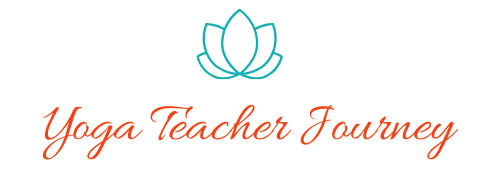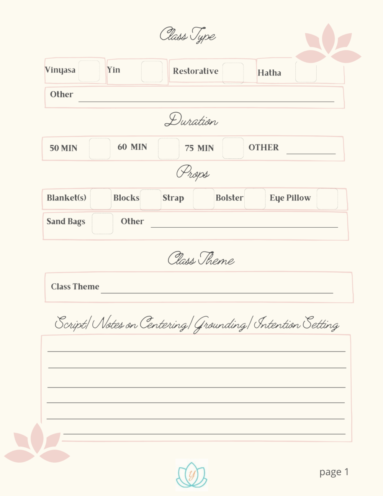“People will forget what you said, people will forget what you did, but people will never forget how you made them feel.” – Maya Angelou
Why a post about relationships? Read on and you’ll understand why it is something worth giving some thought BEFORE you begin your teacher journey. You will be building, nurturing, and navigating relationships with studio owners, managers, fellow teachers, students, and the yoga community as a whole.
All relationships need to be:
- Respected
- Nurtured
- And carefully navigated
Never take any relationship for granted. They can dissolve as quickly as they began.
From the beginning of your yoga teacher journey you have (knowingly or not) been developing a professional brand. At some point early in your yoga teaching training (YTT), you were probably asked to identify your intention for taking the training. Some trainees might have said “to deepen their practice” and others may have declared at that very moment “I want to become a yoga teacher.” If this was you, what you were really doing was saying to others “I have the confidence I need to do this!” Hooray for you! That’s when you became known and began branding yourself as a CONFIDENT trainee. That was a defining moment for your brand (in other words, how others began thinking about you – in a non-judgmental way of course).
What does branding have to do with relationships? Branding is the impression you leave on others. When you think of a certain company or business, you think of their brand; the impression they made on you and how they make you feel.
Regardless of your reasons for wanting to teach, teaching yoga is a business and you will want to build strong relationships with all of your constituents – which begin with your brand. Keep in mind how you want to be thought of when others see you and hear your name. Are you happy, positive, confident, and strong? Or are you a complainer? Do you portray weakness and negativity? Which of these teachers would you like to spend your time with?
During your YTT, you started nurturing relationships with other like-minded yogis who were beginning their own professional journeys. Each fellow trainee made some sort of impression on you – as you did with them. You will most likely remain connected in some way to your YTT group and they are a great foundation to build upon.
What does your yoga teaching resume look like? Do you have one? Is it professional looking? You may be thinking that you haven’t yet worked a teaching job so how can you have a resume? Like any other professional resume, start with your credentials (certifications) your objective (to become a yoga instructor for ABC), and then whatever experience you have up to that point. If there’s no teaching experience to list, consider listing observations, assistant student teaching, etc. Again, you are building your brand here.. the impression you leave on others. What will they think of when later they hear your name? When you meet with studio owners, managers, or potential employers be sure to keep this in mind too.
“There’s no second chance to make a first impression.” – Unknown
With that said, social media should be mentioned here (although it really calls for an entire post of its own). I will just caution to be mindful of what you’re posting online and keep it professional. Your students will be watching!
Next, let’s talk about the other teachers at the studios where you’ll be teaching. Teaching at the same studio should create a strong bond. You may be taking each other’s classes, learning from each other, and relying on each other for sub requests and possibly working together in other arrangements like co-teaching workshops. You’ll be surprised how quickly you’ll build relationships with this part of your Sangha (community). It’s a lovely added bonus to becoming a yoga instructor. Again, keep in mind the impression you are leaving on them. Communicate with respect, in a loving, nurturing way. And if by chance you don’t see eye-to-eye, still always speak in a positive light about other teachers – and about the studio where you are teaching. Word travels fast. The rules of Ahimsa apply here. Observe your thoughts and words and DO NO HARM (to others or to yourself).
Finally, and most importantly, student relationships!! The best part of all of this!! I am SO GRATEFUL for the students who show up each week to practice with me and allow me to guide them and share my knowledge of yoga. What a pleasure it’s been for me to meet and get to know each of these sweet souls. It’s all about the students. They are the most important part of our Sangha.
You WILL connect with YOUR students, too. You’ll get to know them over time, and then miss them when they’re not there – and wonder – was it something I did? Or said? Seriously, you will wonder this, but rest assured – most likely it is not because of you. Sometimes life gets in the way of our best intentions and that might mean taking a yoga break for some.
The same rules above apply here with student relationships:
- Respect
- Nurture
- CAREFULLY navigate
And then I’ll add one more nugget:
- Be grateful and SHOW GRATITUDE
Before you decided to go through YTT, you were a yoga student. You are still a yoga student. We are all still learning. Attending other teacher’s classes, workshops, trainings. How do you like to be treated? Treat others with that same respect, kindness, and gratitude that you would like to be shown.
As we conclude this post, setting boundaries with students is important to discuss here. If a student invites you to go have a cup of coffee, should you accept? It really depends on your relationship with the student. How well do you know them? Is it a harmless cup of coffee so that you can continue a conversation or a segue to something more? You have to use your best judgment and intuition here. If there is any hesitation, don’t do it. You may lose the student/teacher relationship that you have, lose the student entirely – or worse. Respect the student AND the student/teacher relationship. Be grateful for what you have and don’t jeopardize the relationship or your reputation and yoga teacher brand.
More information can be found on creating healthy boundaries and the teacher-student relationship by searching amazon.com:
Teaching Yoga: Exploring the Teacher-Student Relationship by Donna Farhi
Wise Teacher Wise Student: Tibetan Approaches To A Healthy Relationship by Alexander Berzin





